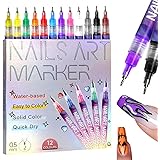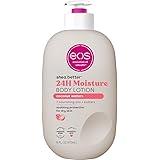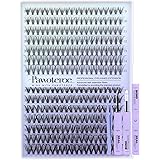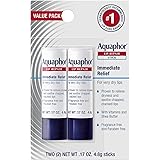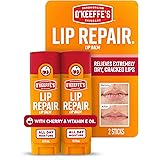Caring for fine and thin hair to achieve healthy length can present unique challenges, but it is entirely possible with the right approach. The video above provides an excellent overview of key principles for nurturing delicate strands. This guide further expands on these concepts, offering detailed strategies and insights to help you cultivate beautiful, long fine and thin hair, embracing its natural elegance.
Understanding Fine and Thin Hair
Firstly, it is important to distinguish between “fine hair” and “thin hair,” as these terms are often used interchangeably but describe different characteristics. Fine hair refers to the diameter of individual hair strands; each strand is slender and delicate. Thin hair, on the other hand, describes the overall density of hair on the scalp, meaning the total number of hairs is lower, resulting in a smaller ponytail circumference. Both types of hair share common characteristics, such as being prone to greasiness, easily weighed down by products, and more susceptible to damage due to their delicate structure.
The Three Golden Rules for Growing Long, Fine Hair
To successfully grow long fine and thin hair, a foundation of gentle and consistent care is essential. Three primary rules are observed to be particularly effective in minimizing strain and promoting health.
1. Gentle, Frequent Washing
It is often recommended to extend the time between washes to reduce mechanical strain. However, for fine and thin hair, this approach frequently proves problematic. The scalp’s natural oils (sebum) tend to spread more quickly across individual fine strands, making hair appear greasy almost immediately. Therefore, washing hair rather often is typically advised. The critical element is ensuring the washing process is gentle, minimizing friction and aggressive scrubbing that could lead to breakage.
Regular, gentle washing ensures the scalp remains clean and free from build-up, which can impede healthy hair growth. The focus should always be on the scalp, where sebum and product residue accumulate, while the lengths are cleansed as the shampoo is rinsed through. This method helps to maintain cleanliness without stripping the hair of essential moisture or causing unnecessary stress.
2. Sparse Use of Leave-in Products
With fine and thin hair, it is remarkably easy to over-apply leave-in products, leading to a limp, stringy, or greasy appearance. Leave-ins, by their nature, remain in the hair until the next wash, and their cumulative effect can be significant on delicate strands. Care must be taken to use only tiny amounts, often no more than a few drops or a pea-sized dab.
The correct application involves emulsifying the product thoroughly in the hands before gently distributing it, primarily through the mid-lengths and ends of the hair. Starting with the smallest possible quantity and gradually increasing if needed is a prudent strategy. As highlighted by individuals like Heike in the video, finding the ideal leave-in and the precise amount often requires careful experimentation.
3. Handle with Extreme Care
Regardless of hair type, hair care requires gentleness, but for fine and thin hair, this is paramount. These delicate strands are highly susceptible to damage from rough handling. Brushing, for instance, should always be executed with a soft touch, starting from the ends and gradually working upwards to detangle knots without tearing through the hair.
Furthermore, stressful styling methods are best avoided. This includes excessive heat styling (blow-drying, curling, straightening), tight hairstyles that pull at the roots, and sticky products like hairspray, which can create a stiff cast that is difficult to remove without causing breakage. The goal is to minimize all forms of mechanical and chemical stress to preserve the hair’s integrity and allow it to grow without interruption.
Beyond the Basics: Advanced Care Techniques
While the golden rules form a solid foundation, incorporating more advanced techniques can further enhance the health and resilience of fine and thin hair, especially when aspiring for significant length.
Optimizing Your Wash Routine
The washing process is considered a cleaning ritual, not a direct care treatment, and it inherently places some stress on the hair. To mitigate this, specific practices are employed.
Scalp Health: The Foundation
A healthy scalp environment is fundamental for robust hair growth. Regular scalp care is highly recommended for those with delicate hair types. This can include a gentle scalp massage, which helps to stimulate blood circulation to the hair follicles, thereby encouraging growth. A boar bristle brush, as seen in the video, can be used for a stimulating massage prior to washing.
Additionally, nourishing treatments like oil or yogurt masks applied to the scalp can be beneficial. These treatments provide hydration and essential nutrients. It is crucial, however, that any scalp treatment is thoroughly rinsed out, sometimes requiring a double shampoo, to prevent residue that could make fine and thin hair appear greasy prematurely.
Another technique, known as “scalp wash,” involves applying shampoo directly to the scalp while protecting the lengths with conditioner or a treatment. This method effectively cleanses the scalp without over-cleansing or drying out the more vulnerable ends, contributing significantly to damage prevention for long hair.
Shampoo and Conditioner Selection
The choice of shampoo and conditioner is highly individual, yet certain characteristics are generally beneficial for fine and thin hair. Products are often sought that do not weigh the hair down but instead leave it feeling fluffy and light. Examples from the video, such as Desert Essence Coconut shampoo, or specific options from Mix My Shampoo and Dadosens, are cited by users like Heike and Sabrina for their suitability.
For conditioners, lightweight formulations are preferred. Brands like Alverde, Alterra, and The Body Shop’s Banana conditioner are mentioned as examples that work well for some individuals. The key is to avoid heavy, silicone-rich products that can create build-up and make fine hair feel sticky or greasy. Focus should be on conditioners that provide adequate moisture and detangling properties without adding excessive weight.
The Nuance of Leave-in Treatments
While minimal use of leave-ins is advised, selecting the right type can make a significant difference in managing frizz and adding a touch of polish. Different formulations are preferred by various individuals; for example, creams are often found to be easier to distribute evenly than oils, reducing the risk of a stringy outcome on fine and thin hair. Specific products like B-Mine moisturizer, a protein leave-in spray, or Kneipp Calendula cream are favored by individuals like Heike and Sabrina for their ability to provide moisture without heaviness.
An emergency tip includes using a tiny amount of regular hand cream as a leave-in. This demonstrates that for fine hair, less is often more, and even common, lightweight moisturizers can suffice when applied judiciously.
The Path to Long Hair: Sacrifices and Strategies
Achieving truly long fine and thin hair often requires a conscious decision to prioritize hair health over popular, yet damaging, styling trends.
Avoiding Damaging Practices
Many common styling practices, while effective for adding temporary volume or altering appearance, are detrimental to the long-term health and length of fine and thin hair. These include teasing, curling with heat, aggressive blow-drying, and chemical treatments such as dyeing, especially blonde highlights. Damage is frequently observed with these methods, as the delicate hair structure is compromised, leading to breakage and preventing the hair from reaching its full length potential.
For those committed to growing their hair long naturally, a decision must be made to forgo these damaging activities. The integrity of the hair strand must be preserved at all costs. This means opting for air-drying whenever possible, using heat protectants sparingly if heat styling is unavoidable, and choosing gentle, temporary styling methods over permanent chemical alterations.
Embracing Natural Beauty
The inherent beauty of fine and thin hair is often overlooked in a culture that frequently equates volume with beauty. However, fine hair possesses a unique lightness, softness, and delicate aesthetic that cannot be replicated by thicker hair types. It often dries quickly, feels incredibly soft to the touch, and moves with a natural flow.
Instead of trying to “pump up” fine hair with harsh chemicals or aggressive styling to make it appear thicker, which ultimately leads to damage and loss of its natural charm, the focus should be on preserving its innate qualities. Fine hair thrives on soft and gentle care, which allows its natural elegance to shine through. By understanding its needs and responding with appropriate gentle hair care, beautiful, long fine and thin hair can be achieved and celebrated for its unique aesthetic.
With consistent dedication to gentle handling, appropriate product selection, and a focus on scalp health, the journey to beautiful, long fine and thin hair is not only achievable but also incredibly rewarding.


